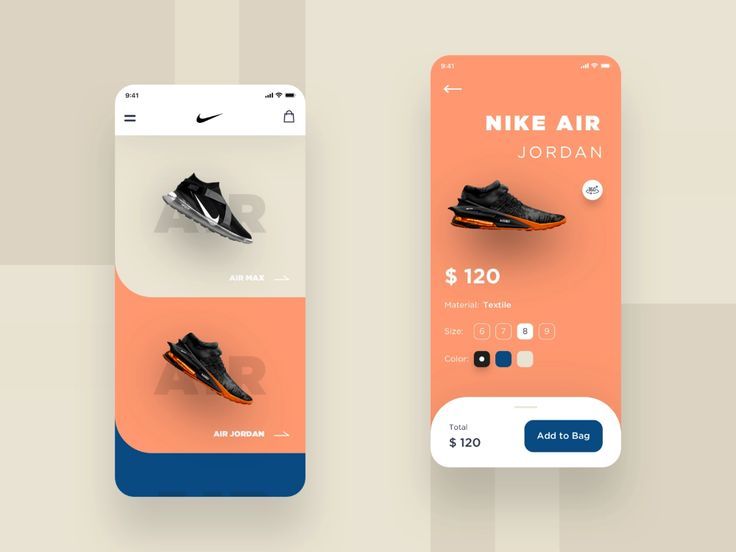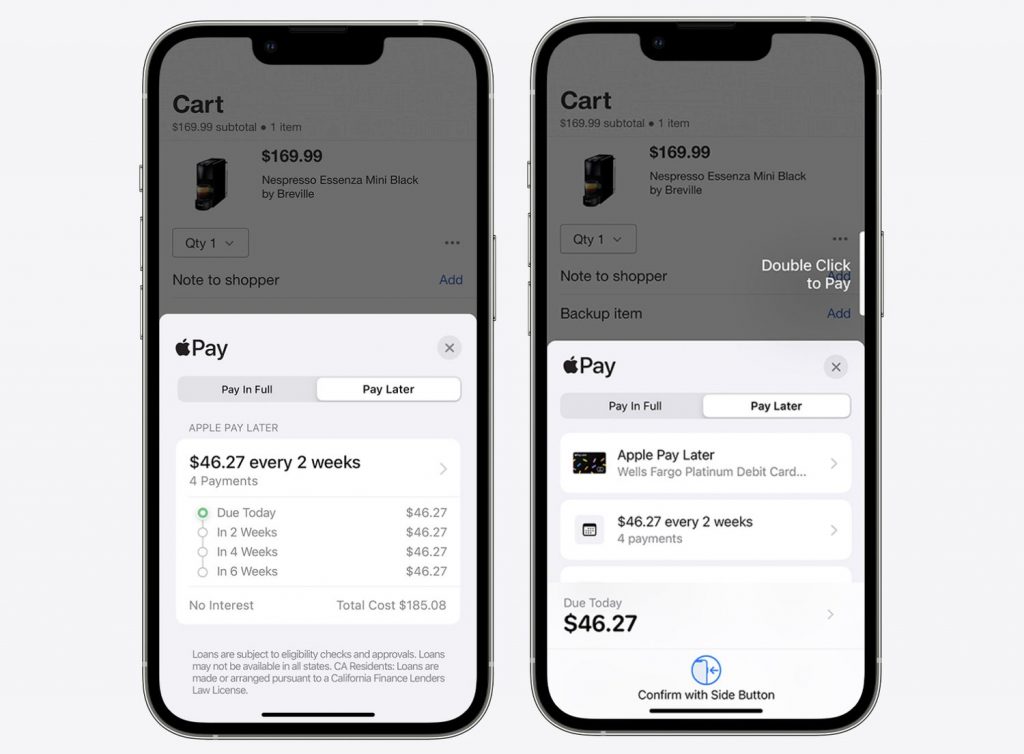
Mobile app space has come to dominate the retail landscape. As per eMarketer, in 2023, mobile app space is projected to account for nearly 73% of total e-commerce sales. The proliferation of smartphones and seamless mobile internet accessibility have catapulted it to the forefront. Brands that stay ahead in this game are the ones that understand the evolving consumer behavior and leverage it to offer an optimized mobile shopping experience. In this article, we dive into the game-changing mobile commerce trends that will set you apart from your competitors.
For instance, Nike, a frontrunner in digital innovation, launched its ‘Nike App at Retail’ in 2023, merging the physical and digital retail spaces. This app provided a personalized in-store experience to its mobile users, allowing them to reserve items, explore in-store products, and even request a fitting room.

In the same vein, Amazon’s ‘Amazon Go’ concept, with its cashier-less stores, has been a game-changer. By enabling customers to shop and make payments using the Amazon App, it has significantly streamlined the shopping experience in 2023.
Another trend that has caught momentum is the use of Augmented Reality (AR) in mobile commerce. IKEA, through its IKEA Place app, allowed customers in 2023 to visualize how furniture would look in their space before making a purchase, thereby reducing return rates and enhancing customer satisfaction.
These game-changing trends exemplify how innovations in mobile commerce are shaping the future of retail, setting apart the businesses that embrace them.
In 2023, artificial intelligence (AI) and machine learning have pushed the frontiers of personalization in mobile commerce, creating a more tailored and immersive shopping experience. These technologies analyze customer data, including browsing habits and purchase history, to provide personalized product recommendations and offers, enhancing customer engagement and driving sales.
Companies such as Sephora and Stitch Fix have leveraged AI to transform their mobile shopping experience. Sephora’s ‘Virtual Artist’ app uses AI to scan a user’s face, allowing them to “try on” different makeup products virtually, leading to personalized product recommendations based on user preferences. Similarly, Stitch Fix employs machine learning algorithms to understand individual style preferences and deliver personalized clothing and accessory recommendations.
In the realm of e-commerce, platforms like Amazon have excelled at harnessing AI for dynamic pricing, product recommendation, and personalized marketing, leading to an increase in conversions. By adopting these advanced AI and machine learning technologies, businesses can offer a highly personalized and engaging mobile commerce experience, setting themselves apart in a competitive marketplace.
Augmented Reality (AR) is revolutionizing the mobile commerce landscape by turning shopping into an immersive, interactive experience. By overlaying digital information onto the physical world, AR allows customers to visualize products in their own environment before making a purchase, bridging the gap between the online and offline shopping experience. This technology promotes customer confidence and reduces return rates, significantly enhancing customer satisfaction and loyalty.
In 2023, brands like IKEA and Warby Parker have successfully incorporated AR into their mobile shopping experience to enrich customer engagement. IKEA’s ‘Place’ app allows customers to visualize furniture items in their homes before purchasing, effectively reducing the uncertainty of online furniture shopping. This has led to an increase in customer confidence and conversion rates for the company.

Similarly, eyewear brand Warby Parker uses AR in their ‘Virtual Try-On’ feature, allowing customers to see how glasses will look on their face in real time. This innovative use of AR has not only streamlined the shopping process but also significantly boosted Warby Parker’s online sales.
In the realm of e-commerce giant like Amazon, AR View lets customers visualize the look and fit of products in their own space. By turning the online shopping experience into an interactive journey, Amazon has seen a significant spike in customer engagement and conversion rates.
In conclusion, the integration of AR in mobile commerce has shown tremendous potential in enhancing the customer experience and boosting sales. As this technology continues to evolve, we can expect to see even more innovative applications in the mobile commerce landscape.
The emergence of voice commerce marks a significant shift in the mobile commerce landscape. In 2023, an estimated 50% of all searches were voice-activated, according to ComScore. This development is transforming the way consumers interact with brands and make purchases. Now, more than just a tool for simple queries, voice technology enables customers to shop online, compare prices, and place orders without lifting a finger.
One notable example of a brand leveraging voice commerce is Walmart. They partnered with Google Assistant to allow customers to shop for groceries using voice commands. This feature, combined with Walmart’s quick and efficient delivery services, offers customers an incredibly convenient shopping experience.
Another example is Domino’s Pizza, which has integrated its ordering system with Amazon’s Alexa. This allows customers to place their orders by simply speaking to their Alexa devices. The result is a seamless, frictionless buying experience that enhances customer satisfaction and increases the likelihood of repeat orders.

Companies like Starling Bank are also innovating with voice commerce. They have integrated with Google Home and Google Assistant, allowing customers to perform banking activities such as checking their balance or recent transactions using voice commands.
In conclusion, the rise of voice commerce offers brands the opportunity to create more seamless, convenient, and engaging customer experiences. As this technology evolves and becomes increasingly widespread, brands that successfully integrate voice commerce into their mobile shopping platforms will likely see increased customer engagement and higher sales.
The advent of mobile commerce has transformed social media platforms into potent shopping destinations. With users spending a significant amount of their time on these platforms, businesses have the unique opportunity to not only engage with their audience but also pitch their products directly, thereby shortening the customer journey.
For instance, Instagram launched the ‘Shop’ function in 2023, which enables users to shop directly from a brand’s post or story. Brands like H&M and Nike have embraced this feature, providing users with a seamless shopping experience without having to leave the app. This feature has reportedly increased their conversion rate by nearly 25%, emphasizing the effectiveness of social media in mobile commerce.
Facebook has also expanded its shopping features in 2023, by introducing Facebook Shops. This feature allows businesses to create a single online store accessible from both Facebook and Instagram. Shopify, a leading eCommerce platform, is leveraging this feature, allowing its merchants to reach a wider segment of their target audience.
Moreover, TikTok, a platform that saw exponential growth in recent years, launched ‘TikTok Shopping’ in partnership with Shopify. The integration allows Shopify merchants to sell their products directly through their TikTok profiles, providing a new avenue for revenue and customer acquisition. Brands like Gymshark are taking advantage of this, reporting an increase in sales and greater brand visibility.
These examples demonstrate the growing integration of social media and mobile commerce, providing brands with a more direct and engaging avenue to reach their customers. As the line between social media and eCommerce continues to blur, brands that leverage these platforms stand to gain a competitive edge.
The emergence of novel mobile payment solutions is revolutionizing the mobile commerce landscape. These technologies not only simplify the transaction process but also play a pivotal role in enhancing customer retention by offering a seamless and user-friendly payment experience. In fact, according to a 2023 report by Business Insider Intelligence, merchants that provide optimized mobile payment options witness a 70% higher conversion rate compared to those who don’t.
One notable example is the growth of Apple Pay, a mobile payment and digital wallet service by Apple Inc. As of 2023, the service has seen a substantive surge in usage, with over 507 million users worldwide, showcasing the growing preference for such quick, seamless payment solutions.

Similarly, Google Pay has also made significant strides in this space. It has introduced new features in 2023, like tokenized cards, which allow users to make payments without exposing their card details, adding an extra layer of security to transactions. This feature has been met with widespread approval, with Google Pay’s user base expanding by 25% within six months of its introduction.
On the eCommerce front, Amazon has taken the lead in innovating mobile payment methods. In 2023, Amazon launched Amazon One, a contactless payment method that allows customers to pay by simply waving their palm. This has not only expedited the payment process, but also significantly enhanced the overall customer shopping experience.
This underline the significance of innovative mobile payment solutions in the evolving landscape of mobile commerce. As customer expectations continue to rise, brands that prioritize providing an optimized, seamless payment experience stand to be the frontrunners in this competitive domain.
Advanced analytics has emerged as a pivotal tool in the realm of mobile commerce, enabling businesses to precisely understand customer behavior and preferences. By harnessing the power of data, brands can devise tailored strategies to boost sales and enhance the overall customer experience. For instance, the use of AI-powered analytics platforms like Google Analytics and Adobe Analytics enables businesses to unravel complex customer data and convert it into actionable insights.

In 2023, companies like Shopify and Amazon have set remarkable precedents in leveraging advanced analytics for enhanced customer insights. Shopify’s analytics dashboard provides a comprehensive view of the sales performance, customer behavior, and overall store performance. This has proven instrumental in helping Shopify merchants refine their strategies and improve their ROI significantly.
Meanwhile, Amazon has taken data analytics to new heights with its machine learning-based recommendation system. By analyzing a customer’s past purchase history and browsing habits, Amazon’s system can suggest products that a customer is likely to buy. This has contributed significantly to Amazon’s sales, with a whopping 35% of its revenue reportedly generated through its recommendation engine.
Furthermore, H&M, the global fashion retailer, has successfully leveraged artificial intelligence and analytics to forecast fashion trends. By gathering and analyzing data from both online and offline sales, social media, and other relevant platforms, H&M has managed to stay ahead of the curve, introducing products that align perfectly with prevailing fashion trends and customer preferences.
In the rapidly evolving realm of mobile commerce, staying abreast of the latest trends is not just advantageous, but absolutely essential. Pioneering advancements such as sophisticated data analytics, AI-driven recommendations, and foresighted trend forecasting have revolutionized the m-commerce landscape, offering brands unique opportunities to understand, engage, and retain their consumer base.
A leading example from 2023 is the fashion giant, Zara, which has utilized AI to not only predict fashion trends but also manage inventory efficiently. Their system, aided by machine learning, conducts real-time analysis of customer purchases, social media trends, and even weather forecasts to predict demand for various products. This has allowed Zara to significantly reduce overstock situations and improve their sustainability footprint.
Another brand that made waves in 2023 is Alibaba with its “New Retail” strategy. This model seamlessly integrates online, offline, logistics and data across a single value chain. With advanced analytics and consumer insights, Alibaba was able to offer a personalized, unified customer experience across all touchpoints, leading to increased sales and customer loyalty.
Finally, the 2023 success story of Etsy, an e-marketplace for unique and creative goods, is worth mentioning. Etsy embraced the mobile-first approach and integrated an AI-driven recommendation engine. It greatly improved the user experience by offering personalized product suggestions, which resulted in a 20% increase in their conversion rate.
In conclusion, as mobile commerce continues to evolve, brands that adapt, innovate, and capitalize on these emerging trends are likely to thrive in the increasingly competitive digital marketplace.
Enhance Your Mobile Customer Experience with Apptile
Elevate your e-commerce success with an exceptional mobile CX. Apptile specializes in crafting personalized, engaging mobile interactions that boost customer loyalty. Our platform is designed for e-commerce businesses seeking to captivate and delight both new and returning shoppers. Ready to transform your mobile strategy? Contact Apptile now and let’s make your customer experience extraordinary.